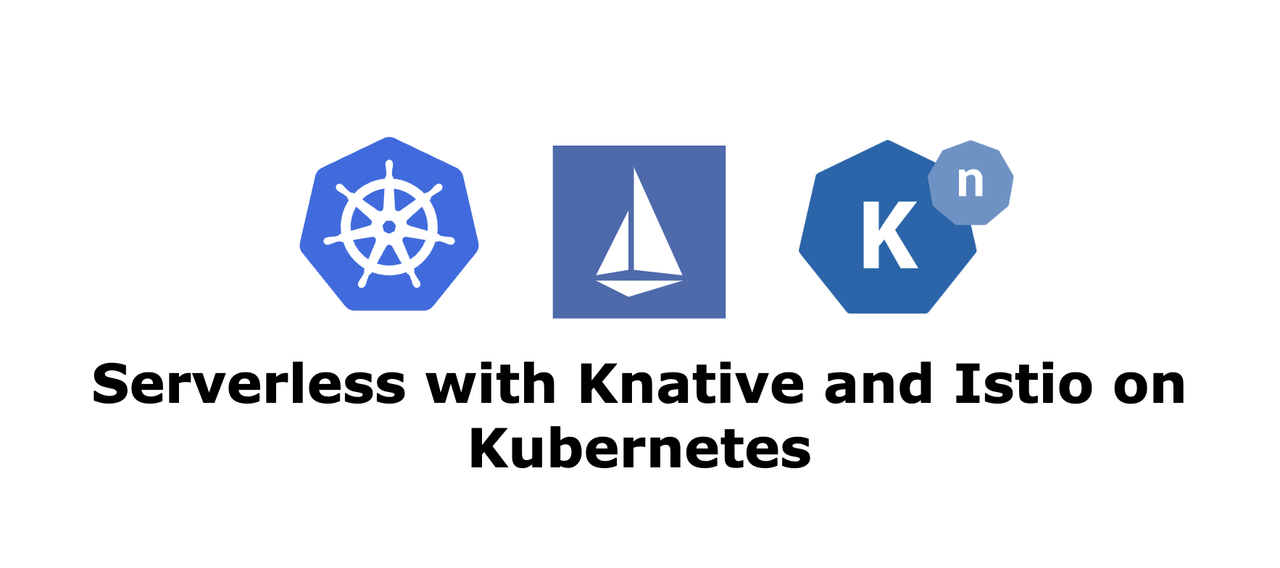Serverless with Knative and Istio on Kubernetes

Knative is an open source project that provides a set of building blocks for creating, deploying, and running serverless applications on Kubernetes. It includes components for building, serving, and scaling containerized applications, and can be used to run a variety of workloads, including microservices, batch jobs, and functions.
Knative has several key features that make it useful for building cloud-native applications, including:
-
Automatic scaling: Knative can automatically scale applications up and down based on demand, making it easy to build highly-available and scalable applications.
-
Serverless: Knative provides a serverless computing platform, allowing developers to build and deploy applications without having to worry about infrastructure management.
-
Event-driven: Knative can trigger the execution of an application in response to external events, such as the arrival of new data in a database or the completion of a batch job.
-
Customizable: Knative provides a set of building blocks that can be customized and extended to suit the specific needs of an application.
Istio is a service mesh tools that provides observability, security in depth, and traffic management.
Prerequirments:
- Istio (Install Istio)
- Cert Manager
Install Knative
Firstly, we have to install Knative
Install the Knative Serving component
- Install the required custom resources by running the command:
1
$ kubectl apply -f https://github.com/knative/serving/releases/download/knative-v1.8.3/serving-crds.yaml
- Install the core components of Knative Serving by running the command:
1
$ kubectl apply -f https://github.com/knative/serving/releases/download/knative-v1.8.3/serving-core.yaml
Install a networking layer
We already have Istio installed, so we need to install the Knative Istio controller:
1
$ kubectl apply -f https://github.com/knative/net-istio/releases/download/knative-v1.8.1/net-istio.yaml
Verify the installation
1
$ kubectl get pods -n knative-serving
Configuring domain name
We need to configure domain name to make our domain publicly accessible.
We must update the DNS provider to point to the IP address for our service ingress. Create a wildcard record for the namespace and custom domain to the ingress IP Address
1
*.knative.example.com 59 IN A <istio-ingress-gateway-ip>
Then update config-domain so Knative knows about our domain
1
$ kubectl edit cm config-domain -n knative-serving
1
2
3
4
apiVersion: v1
data:
knative.example.com: ""
kind: ConfigMap
Enable TLS
Firstly, we will create a ClusterIssuer for generating certificates
More details about configuring DNS01 Challenge Provider DNS01
1
2
3
4
5
6
7
8
9
10
11
12
13
14
15
16
17
18
19
20
21
22
23
24
25
apiVersion: cert-manager.io/v1
kind: ClusterIssuer
metadata:
name: letsencrypt-prod
namespace: istio-system
spec:
acme:
server: https://acme-v02.api.letsencrypt.org/directory
email: [email protected]
privateKeySecretRef:
name: letsencrypt-prod
solvers:
- dns01:
cloudflare:
email: [email protected]
apiTokenSecretRef:
name: cloudflare-api-token-secret
key: api-token
- http01:
ingress:
class: istio
selector:
dnsNames:
- "example.com"
- "*.example.com"
Install networking-ns-cert component
Provisioning a certificate per namespace only works with DNS-01 challenge.
1
$ kubectl apply -f https://github.com/knative/serving/releases/download/v0.21.0/serving-nscert.yaml
Configure config-certmanager ConfigMap
We have to setup our cluster issuer ref
1
$ kubectl edit configmap config-certmanager -n knative-serving
Add the issuerRef within the data section:
1
2
3
4
5
6
...
data:
...
issuerRef: |
kind: ClusterIssuer
name: letsencrypt-prod
Turn on Auto TLS
Update the config-network ConfigMap in the knative-serving namespace to enable autoTLSand specify how HTTP requests are handled
1
$ kubectl edit configmap config-network -n knative-serving
Add the autoTLS: Enabled attribute under the data section:
1
2
3
4
5
6
...
data:
...
autoTLS: Enabled
httpProtocol: Redirected
...
Supported httpProtocol values:
- Enabled: Serve HTTP traffic.
- Disabled: Rejects all HTTP traffic.
- Redirected: Responds to HTTP request with a 302 redirect to ask the clients to use HTTPS.
Install Knative CLI
1
$ brew install knative/client/kn
For other OS check out Installing the Knative CLI
Testing
1
kn service create helloworld-go --image gcr.io/knative-samples/helloworld-go --env TARGET="World"
1
2
3
$ kn service ls
NAME URL LATEST AGE CONDITIONS READY REASON
helloworld-go https://helloworld-go.default.knative.example.com helloworld-go-00001 15h 3 OK / 3 True
1
2
$ curl https://helloworld-go.default.knative.example.com
Hello World!
Knative is a powerful tool for building and deploying cloud-native applications on top of Kubernetes, and can help developers create scalable, event-driven, and serverless applications quickly and easily.